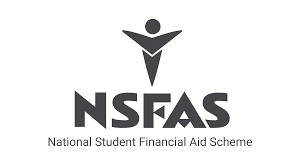
The NSFAS Declaration Form is an essential document in the National Student Financial Aid Scheme application. Signing this form is a compulsory step that confirms the truthfulness of your application data and your agreement to abide by the NSFAS funding rules.
It acts as a binding legal consent that allows NSFAS to verify the personal and financial information you provide with various third-party agencies, such as the South African Revenue Service (SARS) and the Department of Social Development (DSD). Submitting an accurate, completed Declaration Form is important for your application to be processed and approved.
Why the Declaration Form Is Required
The NSFAS Declaration Form, sometimes referred to as the Consent Form, is more than just a piece of paper; it is a commitment to honesty and compliance.
- Information Verification: It grants NSFAS the explicit legal right to check your details (and those of your parents/guardian/spouse) against external databases for credit, income, and status validations. This ensures funds are distributed fairly to genuinely qualifying students.
- Preventing Fraud: The form includes a declaration where you acknowledge that providing false or inaccurate information will result in the application being rejected, and you may face potential legal action.
- Legal Agreement: By signing, you confirm that you have read, understood, and accept the terms and conditions of the NSFAS bursary or loan agreement.
Completing Your Declaration Form: Step-by-Step Instructions
The process of completing and submitting the NSFAS Declaration Form is straightforward, but it requires precision and careful attention to detail.
1. Obtain the Current Form
- Access the Official Document: Always download the most recent version of the form directly from the official NSFAS website at www.nsfas.org.za.
- Check the Year: Verify that you are using the correct form for the application cycle, such as the NSFAS 2026 Declaration Form.
2. Fill in Your Details Correctly
- Use Capital Letters: Complete all sections in CAPITAL LETTERS and use legible handwriting if filling out a hard copy.
- Personal Information: Accurately provide your full name, surname, and ID number exactly as they appear on your official ID document.
- Family Information: Provide the required details for your parents, legal guardians, or spouse, including their full names and ID numbers.
3. Get Required Documentation
The Declaration Form must be accompanied by relevant documents to verify your status. While the main NSFAS application requires certified ID copies and proof of income, additional declaration forms may be needed depending on your specific circumstances:
- Vulnerable Child: If you are recognized as a vulnerable child by the DSD or are an orphan, you must submit a completed and signed Vulnerable Child Declaration Form. This form typically requires verification from a registered social worker.
- Disabled Applicant: If you are a disabled person, you must provide a completed and signed Disability Annexure A Form, which includes a section to be completed by a certified healthcare professional.
4. Apply Necessary Signatures
This is the most critical step. A Declaration Form without the correct signatures is incomplete and will lead to an automatic rejection of your application.
- Applicant Signature: You must sign and date the form.
- Parent/Guardian/Spouse Signature: If you are under 18 or are financially dependent on your parents/guardians/spouse, they must also sign and date the form. Their signature verifies the accuracy of the information provided about the household’s financial status and relationship to you.
- Witness/Official Signatures (If Applicable): Ensure that any required third-party signatures, such as from a Social Worker or Healthcare Professional, are obtained on the relevant annexure forms.
5. Submit the Form and Documents
- Online Submission: NSFAS encourages online submissions through the myNSFAS portal (my.nsfas.org.za). You will need to scan or take a clear picture of the signed form and upload it along with your other supporting documents. Ensure all digital documents are clear and legible.
- Meet the Deadline: Submit your completed application, including the Declaration Form, well before the closing date. For the 2026 application cycle, the closing date is November 15, 2025. Late applications may not be considered.
What to Do If You Find an Error
Prioritize Honesty and transparency throughout your application. If you discover an error after submitting the form, do not panic, but act immediately.
- Contact NSFAS: Get in touch with the NSFAS contact center as soon as possible via the toll-free number or email.
- Prompt Correction: Explain the error and ask for guidance on the correct procedure for submitting a correction or an updated document. Prompt communication can prevent your application from being rejected later.
NSFAS Application Portal and Contact Details
Use the official channels below to access the application portal, download forms, and request support.
| Resource | Details |
|---|---|
| Application Portal | my.nsfas.org.za |
| Official Website | www.nsfas.org.za |
| Toll-Free Number | 0800 067 327 |
| Email for General Queries | [email protected] |
| Head Office Address | The Halyard, 4 Christiaan Barnard St, Cape Town City Centre, Cape Town, 8001 |
🎓 Download Our Bursary Application Checklist
Download our free Application Checklist to make sure you do not miss any required documents. Submitting a complete application is key to being shortlisted.
📥 Download Checklist (PDF)